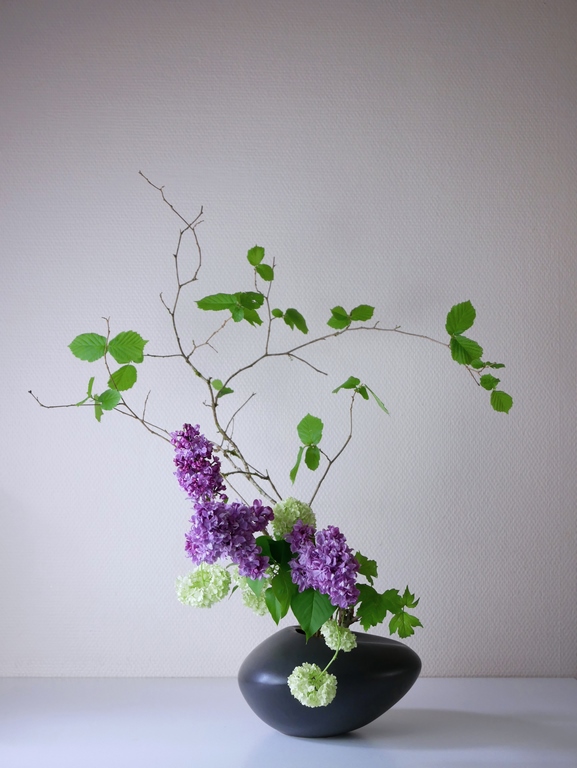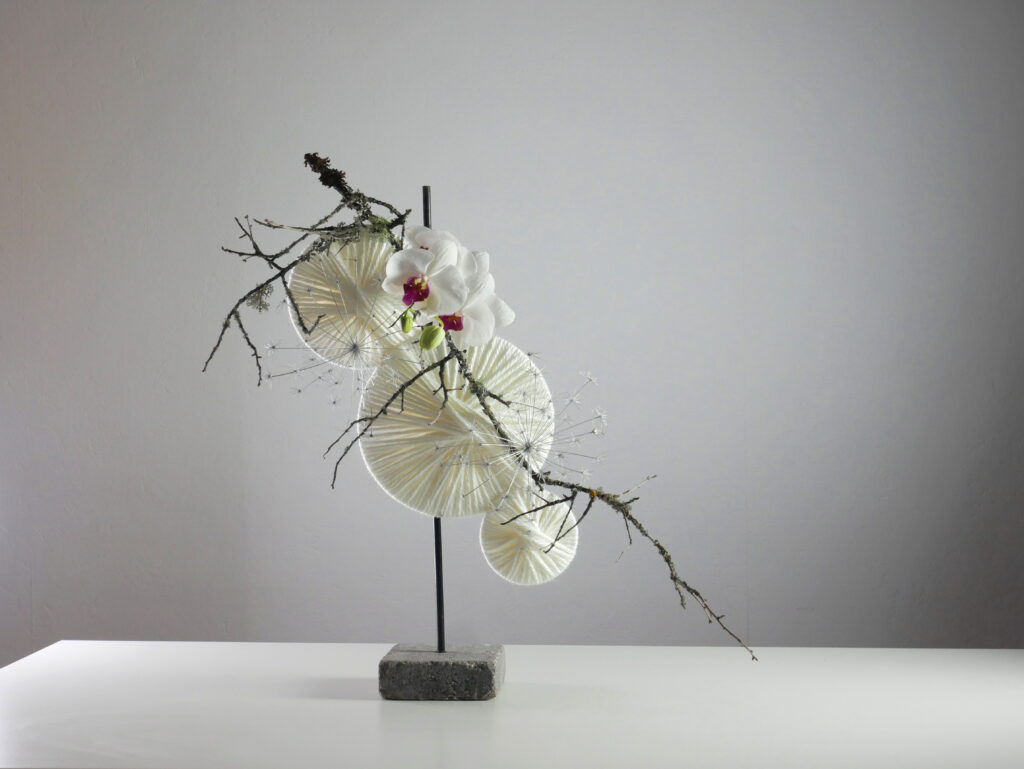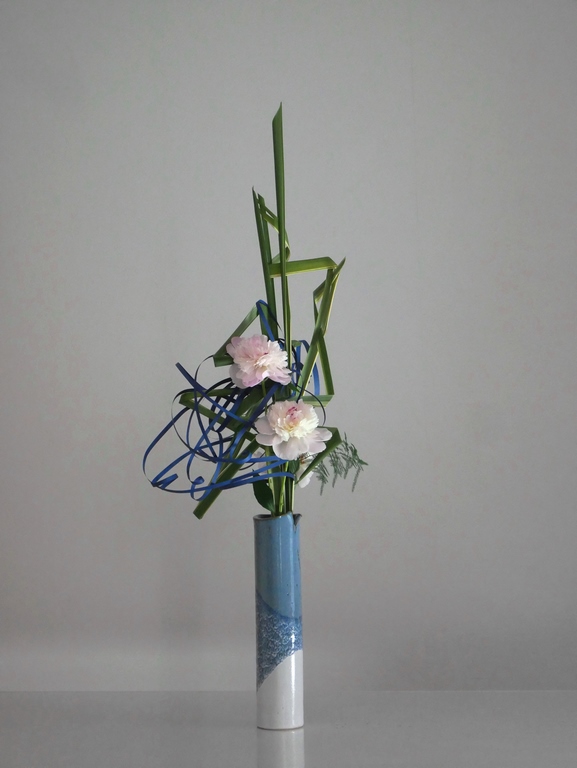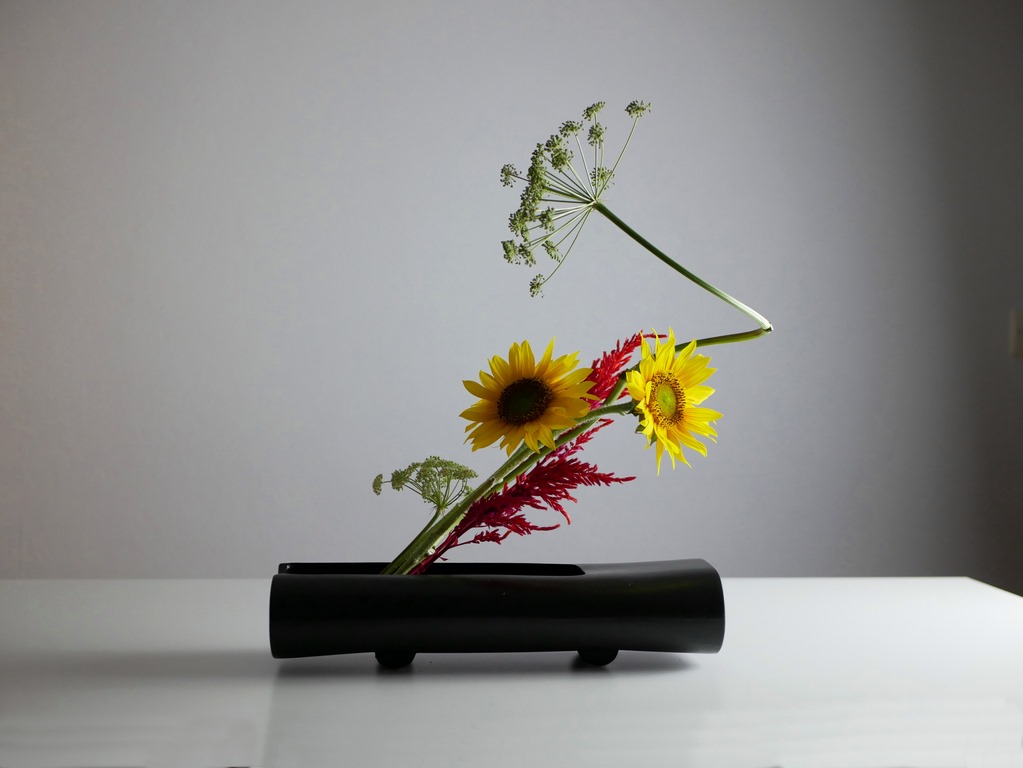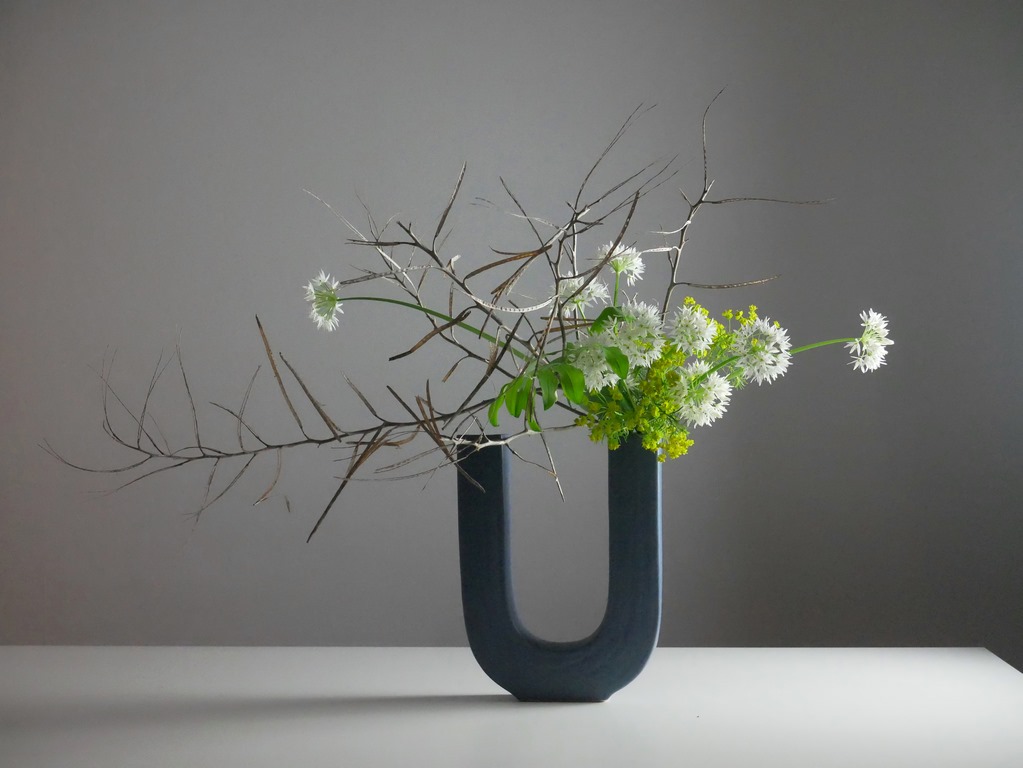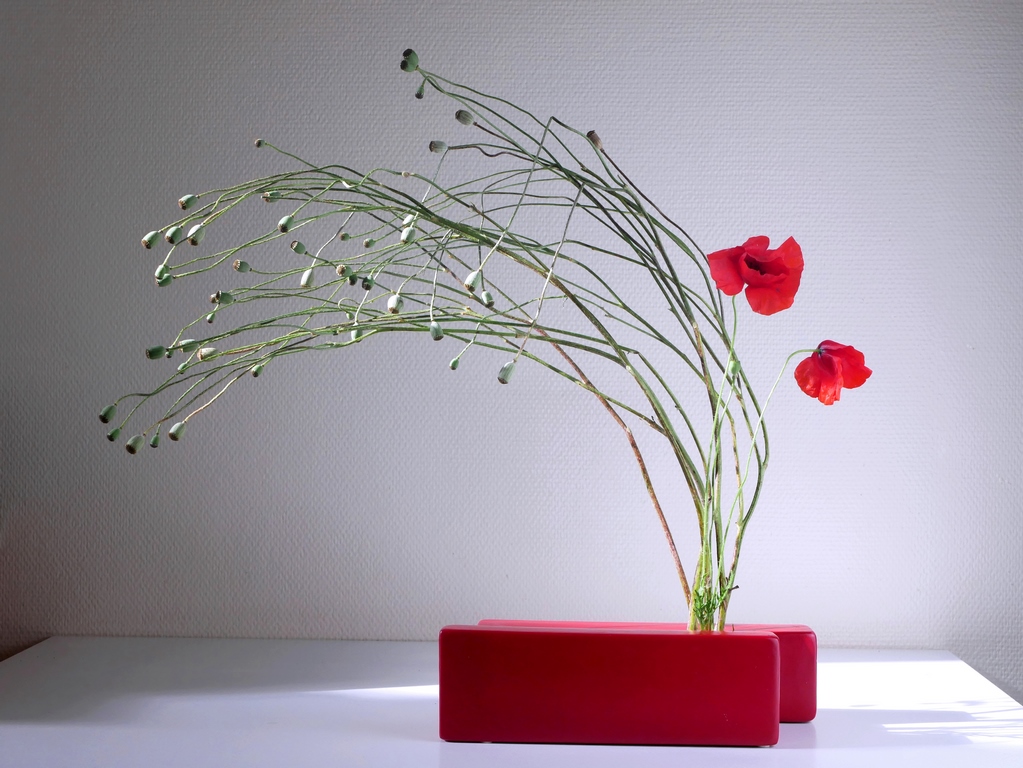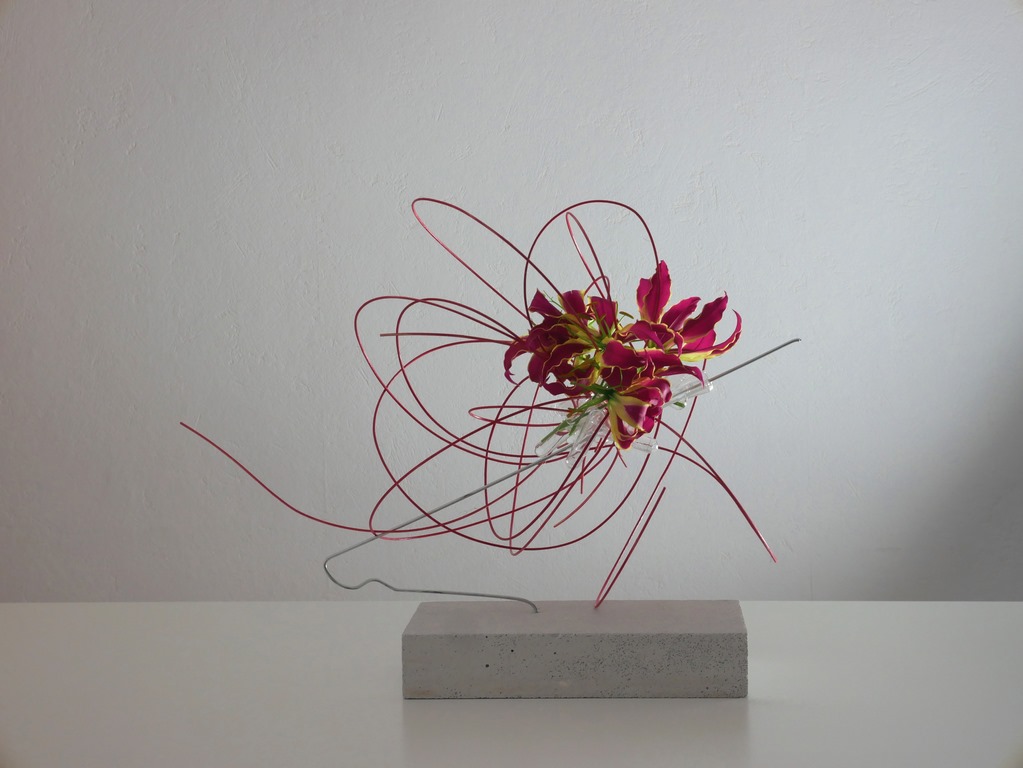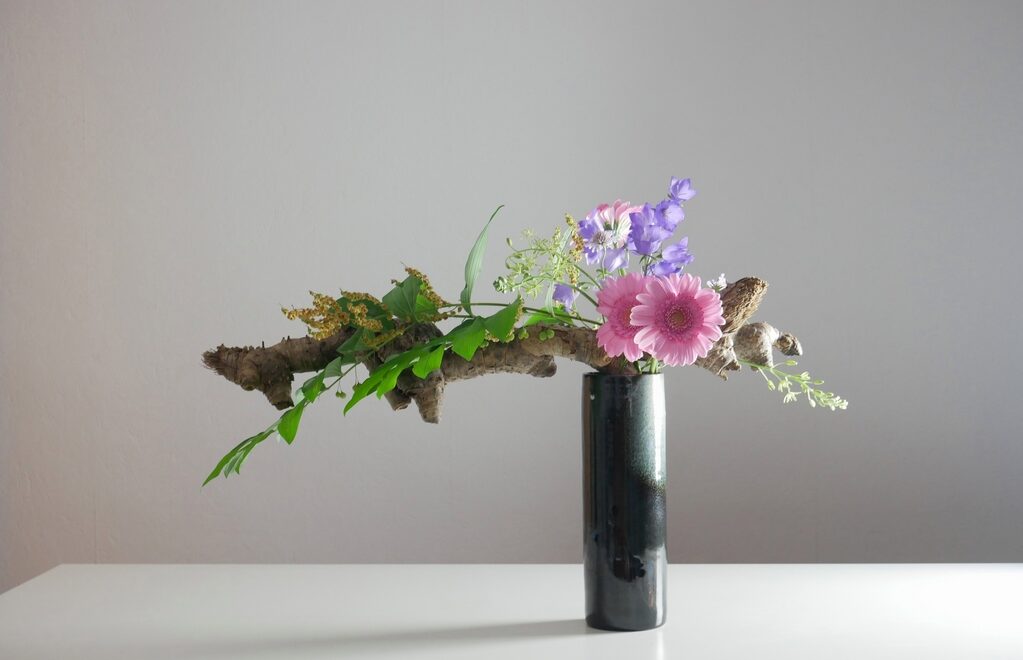
The art of arranging flowers originated in China and developed in Japan under the influence of Buddhism, which was introduced there in the 6th century. Monks used to offer flowers during their rituals and place them in front of the Buddha altar. These floral offerings or Kuge are at the origin of Ikebana.
The word Ikebana comes from Ikeruto bring to life, to keep alive, and to bana or hanaflower. It could be translated as "bringing flowers to life" or "reviving flowers". This ancestral practice is the art of arranging flowers, leaves, branches or any other element of nature in a vase or bowl, following the rhythm of the seasons and according to defined rules and codes. Widely practised in the land of the rising sun, ikebana is an art form in the same way as Chad? (the way of tea) or martial arts. It is known as Kad? or flower path.
Initially a religious practice, this art "is therefore imbued with the infinite compassion of the Buddha for all forms of life".writes Maurice Pinguet (1929-1991) (1) in his text "The art of flowers". "It is said that the first bouquets placed on the altars were not so much an offering as a consolation for the branches broken by the wind".reveals the writer. Flowers and branches torn up by storms that the monks collected in vases to prolong their lives. The priests who made floral offerings at the Buddhist altar of the Rokkaku-do temple - in the centre of Kyoto today, but once an uninhabited area - lived near a pond (in Japanese " ike"), in a small hut (called a " bo" ). For this reason, visitors and devotees began to call the priests by the name " Ikenobo" the name of the oldest school of ikebana.
A symbolic ritual
In 1462, the name of the priest Senkei Ikenobo appears for the first time in historical records as a "master of flower arranging". During the Muromachi era (1333 to 1568), a period when the samurai took power and marked the beginnings of the traditional arts, the art of flower arranging gradually moved out of the monasteries. But only monks, shoguns, samurai and men of high rank had access to this highly codified and refined discipline, which developed into the tea ceremony (Chad? or Sad?). "Anyone familiar with the ways of our tea and flower masters will have noticed the religious reverence with which they treat flowers. They never pick at random, but on the contrary carefully choose each branch or twig without losing sight of the artistic composition they have in mind".explains Okakura Kakuzo in The Book of Tea (2). But it was not until the 16th century that the great tea master Sen no Rikyû, more commonly known as Rikyû, established this enduring tradition, in which floral arrangements are an important aesthetic element of the tea room. He established the spiritual principle called wabi-sabi simplicity and the art of imperfection, which often translates into a single flower in a ceramic vase.
It is said that Shins? S?ami (1455 ? 1525), a painter and tea master at the court of the shogun and patron Ashikaga Yoshimasa (1435-1490), was one of the first to adopt the custom of placing a floral arrangement in the tea pot. tokonoma (3) of the Tea Room. One of his pupils, Senno Ikenobo, was to lay down the philosophy of this art and codify its rules in order to assert its symbolic significance: every arrangement must be ordered around a ternary principle ? the highest element represents the sky, a horizontal element represents the earth and, between earth and sky, a third pole at the centre evokes man.
A living, evolving practice
Towards the middle of the 17th century, during the Edo period (1616-1868), ikebana was opened up to women of noble lineage. This gave rise to a wide variety of schools, each headed by a different artist. lemoto (refers to the founder or Grand Master of a school). In the 19th century, ikebana began to be practised in all areas of Japanese society. At the end of this century, the opening up to the West saw the creation of numerous schools and the appearance of new styles incorporating flowers from other lands. From being formal, the composition of bouquets and styles diversified to become more naturalistic and freer, leaving more room for creativity. Over time, several artistic movements contributed to the evolution of this art form.
In 1895, the sculptor Unshin Ohara (1861?1916) broke with tradition and developed a new form of ikebana. He was the first to create floral arrangements called moribanaliterally "heap of flowers". The plants are arranged in flat bowls and reflected in the water to express the beauty of the landscape. In 1912, he officially founded the Ohara school, whose lemoto is still one of his descendants.
The latest of the Ikebana schools, "the Sogetsu school, founded in 1927 by Sofu Teshigahara, gives an unprecedented freedom by including unconventional materials in the bouquets", explains Christine Guillemot, the school?s ikebana master (see box). This avant-garde style leaves plenty of room for the personality of the practitioner. "For me, ikebana isn't about a flower, it's about a person, said Teshigahara. His children, and then his granddaughter, have taken up this bold path without forgetting the basic rules.
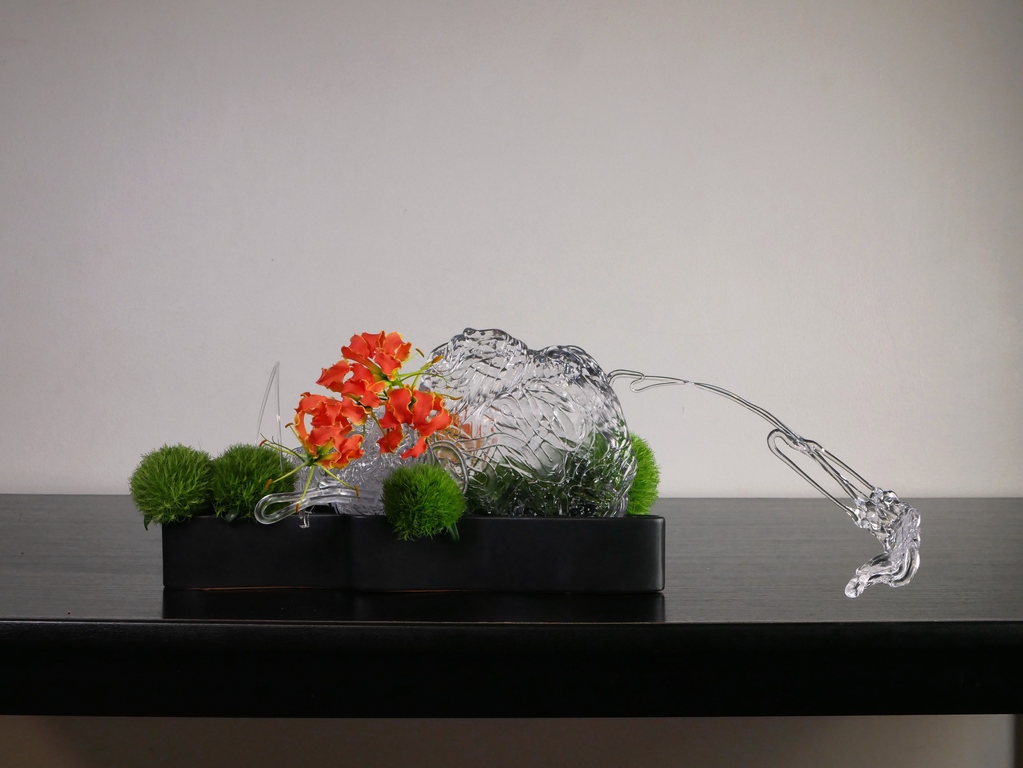
Today, there are over 1,500 schools in Japan covering all shades of sensitivity. However, three major schools dominate the Japanese landscape and are present in France: Ikenobo, the oldest, Ohara and Sogetsu.
A school of harmony and poetry
All the different currents of ikebana observe the following major principles: asymmetry, emptiness, respect for nature and the cycle of the seasons, and a harmonious balance between the vase, the plants and the place for which the composition is intended. Each element has its own importance. Flowers are traditionally chosen according to the month of the year and the occasion (wedding, birthday, etc.): plum or mimosa in February, iris in spring, arum in summer, chrysanthemum in autumn, and so on. The art lies in creating combinations that are simple or not, sometimes daring, but always harmonious: the dark green of a pine branch brightened up by a few mimosa flowers, willow branches softened by roses, the combinations are endless.
The Japanese bouquet also has a meaning; it is designed to be admired from the front, with no surrounding objects to weaken it. More than a floral decoration, an ikebana composition is a presence that invites contemplation and meditation, a way of savouring the beauty of nature. It is less about producing a work of art than about creating a moment of inner peace. "Flowers teach us a lesson: in Japan we sometimes say that they teach us how to live? those who know how to arrange flowers also know how to arrange their lives".says Maurice Pinguet.
This is what the Way of the Flowers leads to. It allows you to develop an extraordinary state of alertness and attention, a full awareness of the moment by presenting their beauty in a final, ephemeral tableau, before their irreversible end.
Christine Guillemot, 2nd degree Ikebana Master of the Sogetsu school
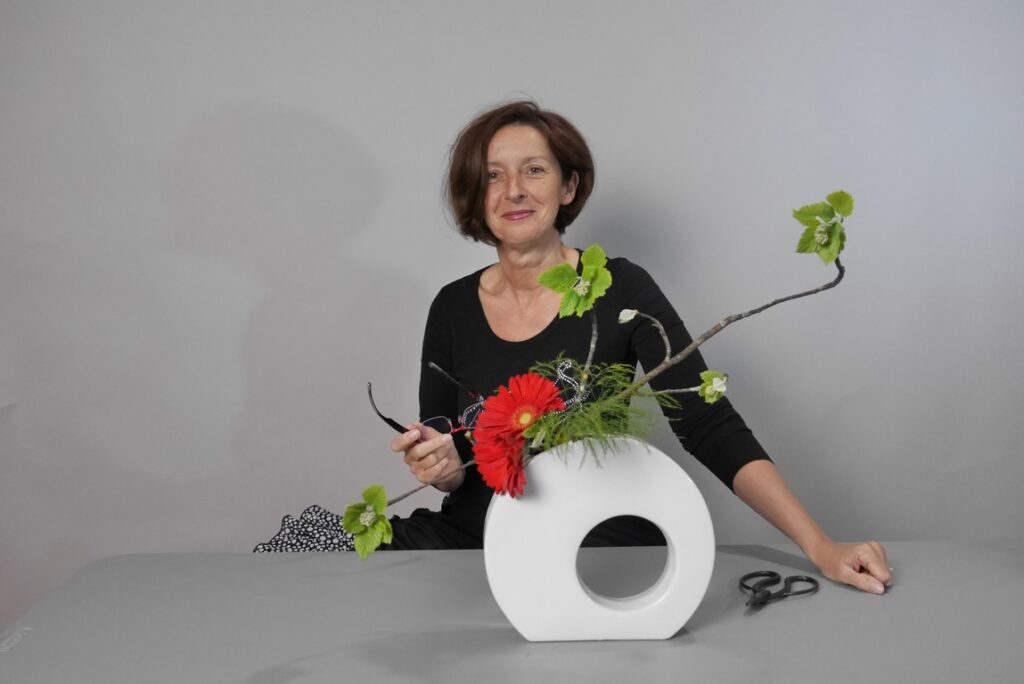
"I discovered ikebana at an exhibition that transported me into a magical world. That same evening, I decided to go and discover this very mysterious art. When I started ikebana, I wanted several things: to be thrilled by the idea of creating bouquets on my own, like the ones I saw at the exhibition. Of course, I wanted to brighten up and embellish my living space and, above all, I wanted to soothe my inner tensions without sitting on a mediation cushion. I wanted more serenity and joie de vivre! Yes, I missed that so much at the time. I knew that ikebana would give me all that! So I decided to take classes, and I was so enthusiastic that one thing led to another and I went from being a student to an assistant to a teacher!
For 17 years now, I?ve been giving classes to students who tell me how much they enjoy creating an ikebana, how much more energy they get and how much less stress they feel. I bring a breath of fresh air to the ikebana enthusiasts who attend my classes. The teaching is both studious and fun. No two classes are alike, and we create with seasonal elements. We like to work with local elements, plane tree bark, clematis vines, wild garlic flowers for example and, especially here in Burgundy, we use vine shoots or vines. We also work with transformed materials such as paper, metal, fabric, plastic and polypropylene. In my classes, everyone has the freedom to express themselves using the materials, plants and flowers provided. It's a subtle approach and an art form that focuses on the relationship between humans and nature.
https://www.facebook.com/IkebanabyEika/
eika-ikebana@laposte.net
- Maurice Pinguet is a French writer and professor at Waseda University in Tokyo, who has written several books on Japan: Le Texte Japon, introuvables et inédits, published by Editions du Seuil in 2009 (reissued in 2016) and La mort volontaire au Japon, published by Editions Gallimard in 1984. https://www.tokyo-time-table.com/maurice-pinguet-l-art-des-fleurs
- The Book of Tea, Okakura Kakuzo, Citadelles & Mazenod. https://universvoyage.com/le-livre-du-the/
- Le tokonoma is a small, raised tatami alcove where the kakemonoThis space was created in the 16th century in palaces, at the back of a room used to receive guests and where the shogun stood. This space appeared in palaces in the 16th century, at the back of a room intended for receiving guests and where the shogun stood. It was inspired by the altar in a Zen chapel.
Text : Brigitte Postel
Photos : Christine Guillemot

